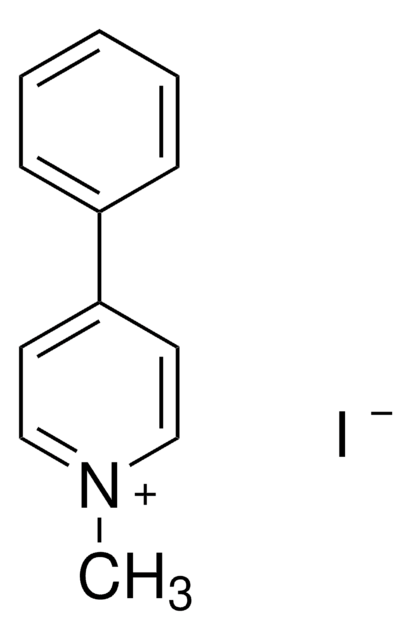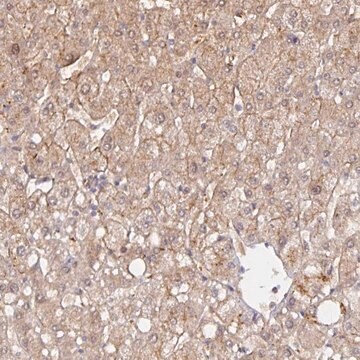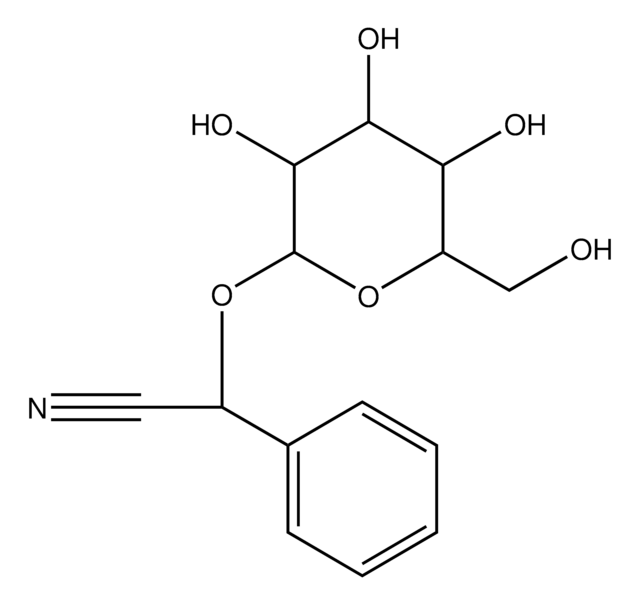M103
1-Methyl-4-(2′-methylphenyl)-1,2,3,6-tetrahydropyridine hydrochloride
solid
Synonym(s):
2′-Methyl-MPTP hydrochloride
Sign Into View Organizational & Contract Pricing
All Photos(1)
About This Item
Empirical Formula (Hill Notation):
C13H17N · HCl
CAS Number:
Molecular Weight:
223.74
MDL number:
UNSPSC Code:
12352200
PubChem Substance ID:
NACRES:
NA.77
Recommended Products
form
solid
color
white
solubility
H2O: soluble
ethanol: soluble
SMILES string
Cl[H].CN1CCC(=CC1)c2ccccc2C
InChI
1S/C13H17N.ClH/c1-11-5-3-4-6-13(11)12-7-9-14(2)10-8-12;/h3-7H,8-10H2,1-2H3;1H
InChI key
QLIQCKBPYIWPTE-UHFFFAOYSA-N
Application
1-Methyl-4-(2′-methylphenyl)-1,2,3,6-tetrahydropyridine hydrochloride has been used to study its effect on core temperature in C57BL/6J mice.
Biochem/physiol Actions
1-Methyl-4-(2′-methylphenyl)-1,2,3,6-tetrahydropyridine hydrochloride (MPTP) is a tertiary amine. It is widely used to induce experimental parkinsonism in mice.
Signal Word
Danger
Hazard Statements
Precautionary Statements
Hazard Classifications
Acute Tox. 3 Oral
Storage Class Code
6.1C - Combustible acute toxic Cat.3 / toxic compounds or compounds which causing chronic effects
WGK
WGK 3
Personal Protective Equipment
dust mask type N95 (US), Eyeshields, Gloves
Choose from one of the most recent versions:
Already Own This Product?
Find documentation for the products that you have recently purchased in the Document Library.
Customers Also Viewed
C Gagnon et al.
Neuroscience letters, 163(1), 31-35 (1993-11-26)
Four monkeys were rendered parkinsonian by N-methyl-4-phenyl-1,2,3,6-tetrahydropyridine (MPTP) i.v. administration and then treated chronically with increasing doses of the D1 agonist CY 208-243 (0.05, 0.1 and 0.5 mg/kg). All animals showed a dose-dependent improvement of their parkinsonian signs after the
S K Youngster et al.
Journal of neurochemistry, 48(3), 929-934 (1987-03-01)
Several analogs of 1-methyl-4-phenyl-1,2,3,6-tetrahydropyridine (MPTP) were synthesized and screened for their capacity to be oxidized by monoamine oxidase (MAO-A or MAO-B) and their capacity to produce nigrostriatal dopaminergic neurotoxicity in mice. All of the compounds were relatively weak substrates for
R Srivastava et al.
Neurobiology of aging, 14(4), 295-301 (1993-07-01)
1-methyl-4-phenyl-1,2,3,6-tetrahydropyridine, (MPTP), produces a parkinsonian syndrome both in man and in experimental animals. Its toxicity is mediated by a metabolite, the 1-methyl-4-phenylpyridinium ion (MPP+). When injected into the striatum, MPP+ is accumulated by dopaminergic nerve terminals and retrogradely transported to
D E Dluzen et al.
Brain research, 609(1-2), 98-102 (1993-04-23)
Male mice treated with MPTP or vehicle were tested for their ability to demonstrate a memory-recognition response as evaluated in a habituation-dishabituation task. Treatment with MPTP severely disrupted the male's habituation-dishabituation response profile compared to vehicle treated animals. Administration of
E H Lee et al.
Neuroscience letters, 165(1-2), 149-152 (1994-01-03)
The interactive effects of clorgyline, deprenyl and 1-methyl-4-phenyl-1,2,3,6-tetrahydropyridine (MPTP) on striatal dopamine (DA), serotonin (5HT) and hippocampal norepinephrine (NE) were examined in the present study. Results indicated that clorgyline did not have a preventive effect against MPTP's toxicity on DA
Our team of scientists has experience in all areas of research including Life Science, Material Science, Chemical Synthesis, Chromatography, Analytical and many others.
Contact Technical Service










